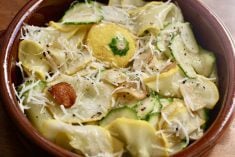Canada’s Food Guide recommends Canadians eat five to 10 servings of fruits and vegetables each day and statistics show we’re beginning to take the advice seriously.
The Ottawa Fresh for Flavor Foundation reports Canadians are eating about 225 kilograms of fruits and vegetables per year compared with 160 kg in 1972.
It’s a wise move as research shows a diet high in vegetables and fruits may help provide protection against heart disease and some types of cancer. That is because most contain minerals, phytochemicals and vitamins, including the antioxidants, vitamin C and beta carotene.
Read Also

Farm auctions evolve with the times
Times have changed. The number of live, on-farm auctions is seeing a drastic decline in recent years. Today’s younger farmers may actually never experience going to one.
Antioxidants are thought to protect against cancer and possibly other diseases because they neutralize free radicals, unstable molecules created by normal chemical processes in the body or by radiation, cigarette smoke and other environmental factors. Antioxidant nutrients include beta carotene, which converts to vitamin A in the body, vitamin C and E.
Phytochemicals, the chemical substances known as indoles, phenols, flavones and isothiocyanates are found in abundance in foods like cantaloupe, tomato or broccoli. They may also help to neutralize carcinogens.
These are compelling arguments for consuming more vegetables and because of their abundance fall is the ideal time to start. Try new combinations and cooking methods like grilling or roasting or combining them with grains like rice.
Grilling gives vegetables a smoky flavor and roasting carmalizes the natural sugars giving them a completely different taste. The secret is to roast vegetables in a single layer in an oiled shallow pan at a high heat 450 F (230 C) to keep the outside crisp and the inside soft. Denser vegetables like carrots and potatoes take longer – up to 40 minutes – so start them first, then add the more tender vegetables like eggplant and peppers after 10 to 15 minutes have elapsed.
Cabbage roll casserole
This recipe is from Monda Rosenberg and Frances Berkoff’s Vitality Cookbook which emphasizes eating dark green and orange vegetables, as well as orange fruits for good health. Rosenberg is the food editor of Chatelaine and Berkoff is a nutrition columnist and dietitian. Cabbage, like other members of the Kale family, broccoli and cauliflower, have cancer protecting potential.
1Ú2 large head cabbage 1/2
4 large carrots 4
1 green pepper, seeded 1
1 cup long grain uncooked rice 250 mL
1 large onion, finely chopped 1
3 crushed garlic cloves 3
or 1 tablespoon (15 mL) minced garlic
1Ú2 teaspoon each salt and freshly ground 2 mL
black pepper
1Ú2 pound ground chicken or beef 250 g
2 cans (14 oz.) tomato sauce 2
1Ú4 cup cider vinegar 50 mL
2 tablespoons brown sugar, packed 25 mL
1 tablespoon dry mustard 15 mL
Use slicing blade of food chopper or chop by hand cabbage, carrots, sweet peppers and set aside.
Mix uncooked rice with finely chopped onion, crushed garlic, salt and pepper. Crumble ground beef or chicken over top and stir gently until evenly mixed. In another bowl stir tomato sauce with vinegar, sugar and mustard. Cover bottom of large 12 cup (3 L) casserole with 1Ú3 cabbage mixture. Follow with 1Ú2 rice mixture. Repeat layers, ending with cabbage layer. Pour tomato sauce over top. Cover and place in 350 F (180 C) oven. Cook without stirring for 45 minutes. Then remove cover gently push spoon down side of dish and baste top with accumulated liquid. Cover and continue baking until rice is cooked 30-50 minutes. Remove from oven and stir until tomato mixture is evenly mixed through vegetables and rice. Serve with light sour cream. Makes six two-cup servings.
Recent research suggests there are no substitutes for nutritious foods. One study using beta carotene supplements as a means of preventing cancer and heart disease found that taking the supplements over a 12-year period offered no benefits. Another testing beta carotene and vitamin A in people considered at high risk for lung cancer was stopped because there was no evidence of benefit and some indication of harm.
The results have caused the University of California Wellness Letter to amend its recommendation to take beta carotene supplements. Since several studies have shown consumption of foods high in beta carotene seem to protect against heart disease, cancer and certain eye disorders nutritionists are re-emphasizing the importance of foods rich in carotenoids, such as carrots, oranges, tomatoes, grapefruit, broccoli, brussel sprouts, kale, spinach and other leafy greens, cantaloupe, yellow corn, sweet potatoes, pumpkin, squash, apricots, peaches, tangerines, mangoes, red peppers, chili peppers and guave. Think orange, green, red and yellow.
Hearty vegetable soup
Homemade soup is possible in 30 minutes with this easy recipe.
1 large onion 1
2 celery stalks 2
2 carrots 2
2 large potatoes 2
1 tablespoon butter 15 mL
6 large tomatoes 6
or 28 oz. (786 mL) can with juice
2 cans (10 oz.) chicken broth 284 mL
1 soup can water 1
1Ú2 teaspoon each thyme, oregano and salt 2 mL
1Ú4 teaspoon freshly ground black pepper 1 mL
2 zucchini 2
With the slicing blade of food processor or sharp knife thinly slice onion, celery, carrots and potatoes. Heat butter in large saucepan over medium heat and stir in onion, celery, carrots and potatoes. Cook, stirring until softened, about five minutes. Coarsely chop tomatoes and stir in broth, water and seasonings. Bring to a boil over high heat. Reduce to medium low cover and simmer 20 to 25 minutes, or until vegetables are tender. Slice zucchini and stir in. Heat just until hot. Season to taste. Makes 10-12 cups (2.5-3 L).
Harvest ratatouille
This top of the stove ratatouille has a unique flavor. The zucchini used should be small not the giants prairie gardeners tend to produce when they forget to harvest them.
2 tablespoons vegetable oil 25 mL
3 large onions, peeled, chopped 3
6 cloves garlic 6
8 large ripe tomatoes, peeled 8
3 tablespoons Dijon mustard 45 mL
1 large eggplant peeled, cut in 1
chunks
2 large green peppers seeded, 2
cut in chunks
2 tablespoons capers, rinsed, drained 25 mL
2 tablespoons granulated sugar 25 mL
1Ú2 cup chopped fresh basil 125 mL
or 2 tablespoons (25 mL) dried
2 tablespoons fresh oregano, chopped 25 mL
or 2 teaspoons (10 mL) dried leaf
1 teaspoon dried leaf thyme 5 mL
2 thin zucchini, cut in chunks 2
Heat oil in a large, heavy-bottomed saucepan. Add onions and garlic. SautŽ over medium heat, stirring often until soft, about 15 minutes. Stir in mustard until blended. Cut each tomato into wedges, then cut in half again and add with juice to mixture. Add eggplant, peppers, capers, sugar, basil, oregano and thyme. Stir over medium heat until mixture starts to boil. Cover and simmer gently about 30 minutes. Uncover and continue to boil gently until thickened. Stir in zucchini, heat through and serve. Makes 10-12 servings. If making ahead, ratatouille can be refrigerated for at least two days and can also be frozen.














